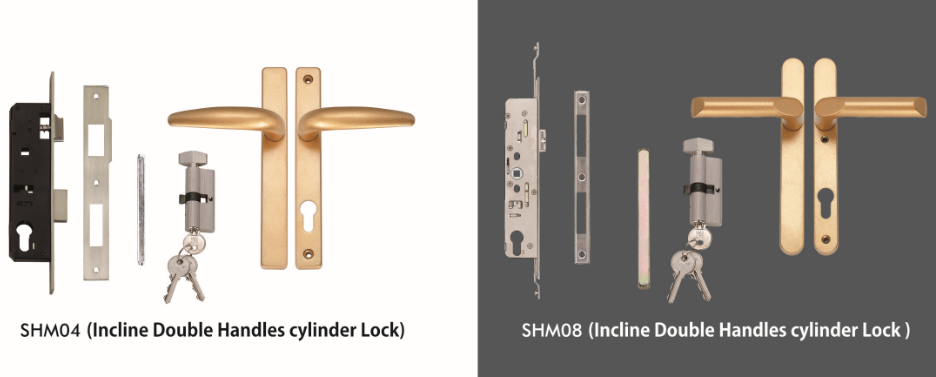As a key trade hub in the Middle East, Bahrain enjoys robust demand for aluminum parts. However, many Bahraini wholesalers frequently encounter quality issues when sourcing Chinese-made aluminum parts, impacting sales and customer trust. This article lists the five most common quality issues facing Bahraini wholesalers and explores how Chinese manufacturers can optimize raw materials, production processes, and quality inspection procedures to eliminate these issues at the source and ensure product compliance with international standards.
- Surface Oxidation or Corrosion on Aluminum Fittings
- Problem Symptoms:
- Aluminum fittings may develop oxidized spots, white rust, or corrosion during transportation or storage.
- The surface coating may also flake off, affecting both appearance and durability.
- How can Chinese manufacturers eliminate this problem at the source?
- Select high-quality aluminum alloys: Use aluminum alloys that meet international standards (such as the AA 6000 series) to reduce impurity content.
- Enhance surface treatment: Use anodizing, electrophoretic coating, or powder coating to enhance corrosion resistance.
- Strict packaging management: Use moisture-proof and oxidation-resistant packaging materials, such as vacuum packaging or desiccant seals.
- Problem Symptoms:
- Dimensional Accuracy Substandard
- Problem Symptoms:
- Aluminum fittings have large dimensional deviations, making them incompatible with other components.
- Threaded hole position deviations affect assembly and use.
- How can Chinese manufacturers eliminate this problem at the source?
- Optimize molds and CNC machining: Use high-precision CNC machines and 3D inspection equipment to ensure tolerances within ±0.1mm.
- Implement First Article Inspection (FAI): Measure the first piece before each batch to ensure it meets the drawing requirements.
- Perform regular equipment calibration: Avoid dimensional errors caused by machine wear.
- Problem Symptoms:
- Aluminum parts lack strength and are prone to deformation or breakage
- Problem manifestations:
- Aluminum parts bend or break during transportation or use.
- Poor load-bearing capacity fails to meet customer needs.
- How can Chinese manufacturers eliminate this problem at the source?
- Optimize material composition: Adjust the ratio of alloying elements such as magnesium and silicon to improve tensile strength.
- Control heat treatment process: Use T5 or T6 heat treatment processes to enhance the hardness and toughness of aluminum parts.
- Enhance load testing: Perform destructive testing on key load-bearing components to ensure compliance with industry standards (such as ASTM B221).
- Problem manifestations:
- Welding or Joint Defects
- Problem Symptoms:
- Porosity and cracks in welds affect structural strength.
- Riveted or threaded connections are weak and prone to loosening.
- How can Chinese manufacturers eliminate this problem at the source?
- Optimize welding processes: Use TIG (tungsten inert gas) or MIG (metal inert gas) welding techniques to reduce porosity.
- X-ray or ultrasonic flaw detection: Perform non-destructive testing on critical welds to ensure the absence of internal defects.
- Strengthen worker training: Improve welding technicians’ professional skills to prevent human error.
- Problem Symptoms:
- Uneven surface treatment or color variation
- Problem manifestations:
- Color inconsistency after painting or anodizing affects the product’s appearance.
- Surface defects such as scratches and orange peel appear.
- How can Chinese manufacturers eliminate this problem at the source?
- Standardized pre-treatment processes: Ensure aluminum parts are thoroughly degreased and pickled before painting or anodizing.
- Automated spray painting lines: Reduce manual errors and ensure uniform coating.
- Colorimeter testing: Use a spectrophotometer to test color consistency and ensure compliance with Pantone or RAL standards.
- How can Chinese manufacturers systematically improve the quality of aluminum parts?
- In addition to solutions to the five major issues mentioned above, Chinese manufacturers should also establish a comprehensive quality management system:
- ISO 9001 certification: Standardize production processes and ensure traceability.
- Third-party quality inspection (such as SGS): Provide authoritative test reports to enhance customer trust.
- Supply chain management: Strictly screen raw material suppliers to prevent inferior aluminum ingots from entering the production line.
- In addition to solutions to the five major issues mentioned above, Chinese manufacturers should also establish a comprehensive quality management system:
- Problem manifestations:
FAQ
Q1: How can I tell if a Chinese aluminum parts supplier is reliable?
Check whether the factory is ISO 9001 certified.
Request a third-party inspection report (such as SGS).
Conduct an on-site visit or video inspection to confirm the production equipment and quality inspection procedures.
Q2: If the aluminum parts I receive have quality issues, how can I file a claim?
Specify the quality assurance clauses in the contract, such as a 30-day return and exchange policy.
Retain the inspection report and communication records as a basis for claims.
Q3: How do Chinese manufacturers ensure that aluminum parts do not rust during ocean shipping?
Use a triple layer of protection: rust-proof oil, vacuum packaging, and desiccant.
Select an experienced logistics company to prevent moisture during ocean shipping.
Q4: How can I customize aluminum parts to specific specifications?
Provide detailed CAD drawings or samples. Chinese manufacturers can provide OEM/ODM production.
Request a 3D-printed sample to confirm dimensions and structure.
Conclusion
When purchasing aluminum parts, wholesalers in Bahrain should focus on five key quality issues: oxidation, dimensions, strength, welding, and surface treatment. By optimizing materials, improving processes, and strengthening quality inspections, Chinese manufacturers can significantly reduce defect rates and enhance product competitiveness. Selecting suppliers with comprehensive quality management systems and establishing long-term partnerships can ensure a stable supply of high-quality aluminum parts.

